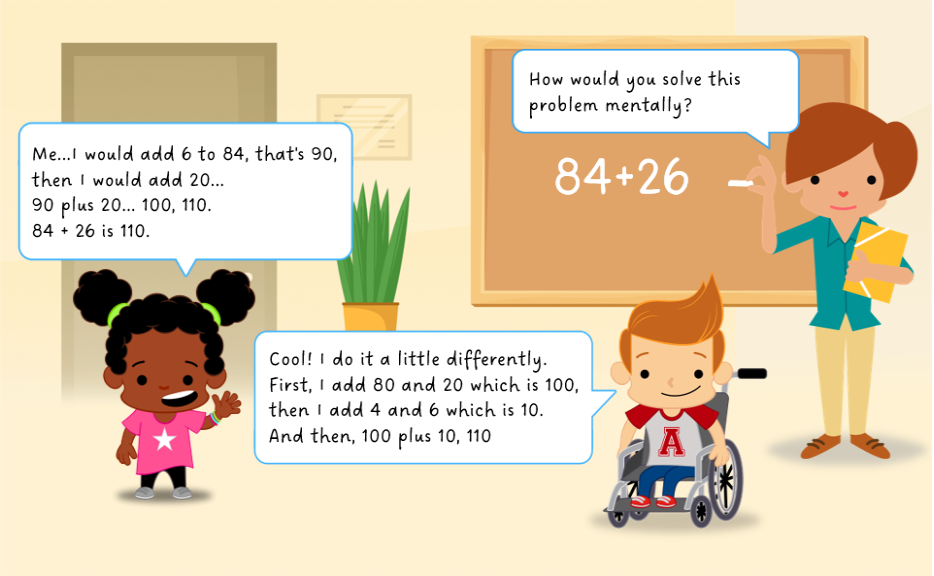Number talks allow for the improvement of math skills and in turn, change attitudes towards mathematics.
Have you ever wondered how to do mathematical operations quickly and accurately? Number talks are a tool aimed at developing those skills and, at the same time, working on many other skills such as oral expression, metacognition, and self-esteem. Sounds good, doesn’t it?
What Are Number Talks?
The main idea behind number talks is to have open discussions among peers about mathematical situations. These situations can range from solving basic operations to more complex problems, which are not solved following an algorithm. The key to these discussions is that all interlocutors actively participate by sharing their thoughts and strategies on how to deal with these mathematical situations.
Participating in a number talk allows for the open exchange of ideas between peers. This helps students to understand different approaches to solving problems and allows them to learn from others. This way, students are not just learning mathematics, but are also developing listening, reasoning, expression, and critical thinking skills, all while solving mathematical problems cooperatively.

As can see, number talks are a very interesting tool for learning mathematics that is related, in turn, to the development of mental calculation strategies or problem-solving. Let’s look at how to use it at school or at home.
Number Talks at School
When we use a number talk as a didactic strategy in the classroom, the teacher has to act as a facilitator and guide the discussion. They should encourage participants to express their strategies and listen to the strategies of all participants; keeping in mind that, in a number talk, there are no right or wrong answers. It is about exploring different methods and approaches to arrive at a solution.
When guiding a number talk among primary school students, it is interesting for the teacher to support the students’ reflection with questions that help the students to organize their reflections and express them. It is essential to use questions and not explanations or assumptions about what the student is trying to explain. The idea is to avoid explaining to the student everything that he can discover.
Here is an example of a number talk:
Teacher – We have to distribute 24 field hockey sticks among 4 teams. And we want all teams to have the same number of sticks. What operation can we use?
Student – With a division.
Teacher – And why would you do it with a division?
Student – Because we have to divide, and when we divide we can do a division.
Teacher – Okay, and how are you going to do the division?
Student: Well… with the multiplication tables.
Student2 – What a good idea! Because multiplication and division are related.
Teacher: Great! And how would you use the multiplication tables to solve this situation?
…
The beauty of number talks is that every single idea that is shared is valuable. This also increases the value of using number talks in mathematics education because it reinforces a positive attitude towards mathematics.
Number Talks at Home
As we have seen, number talks are conversations about mathematical situations, so they can also be practiced at home. It’s very simple!
- Parents or children should think of a mathematical situation. For example:
- What would you do to mentally solve 57 + 39 ?
- Bike tires need to be changed every 5000km or so. If you go to and from school every day by bike, after how many months will you have to change the wheels?
- Then we must express our proposal to solve the problem and listen to the others.
You will be surprised how many different ways there are to reach the same result!
Here at Smartick we also work with the number talks digitally, do you want to give it a try?
Learn More:
- Completing Additions, Subtractions, Multiplications and Divisions
- Theoretical Framework of the Singapore Method
- Mathematical Formulas: What Are They, How Are They Made and Types of Formulas?
- Interleaving vs Blocked Practice to Learn Math
- Mathematical Problems and Their Semantic Categories







